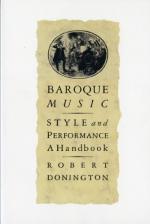|
This section contains 2,968 words (approx. 10 pages at 300 words per page) |

|
Interrelated Trends.
During the final quarter of the sixteenth century, the first gleanings of the paths that the seventeenth-century Baroque style was to take became evident in Bologna, the episcopal city administered by the Catholic reformer Gabrielle Paleotti. The leaders of this Bolognese school, Lodovico, Annibale, and Agostino Carracci, came to fashion a new kind of art that was in many ways opposed to the intellectual formalism and sophistication of the Mannerists. Their new style responded to the Catholic Reformation's demands for religious works that were clear and readily intelligible and which spoke to the hearts of the faithful. By virtue of the many students that the Carracci taught in Bologna, this new style emerged as a recognizable school of painting by the end of the century. Still great variety persisted on the Italian artistic scene, as many Mannerist masters...
|
This section contains 2,968 words (approx. 10 pages at 300 words per page) |

|




